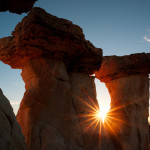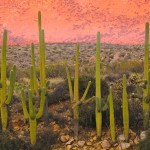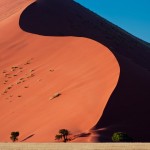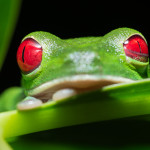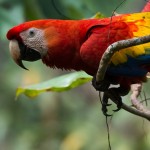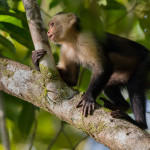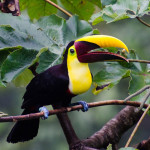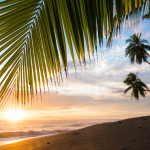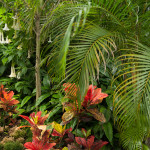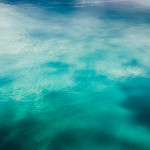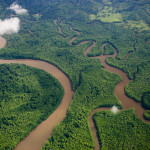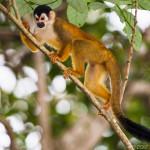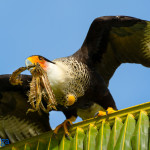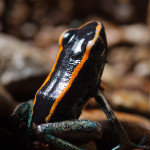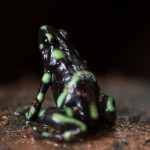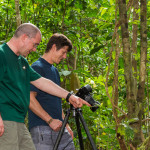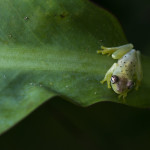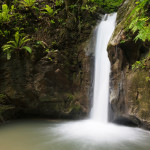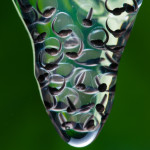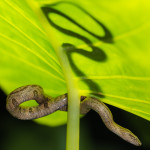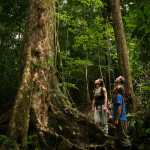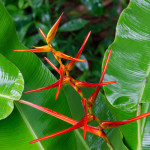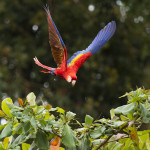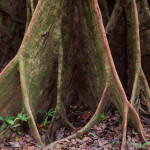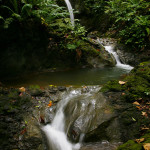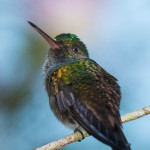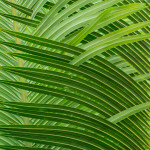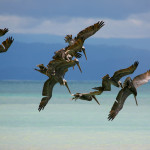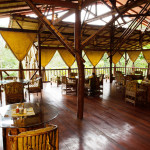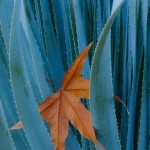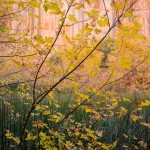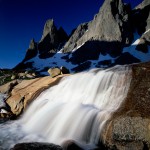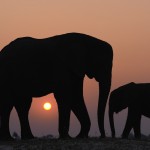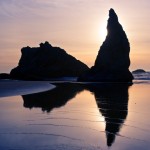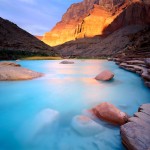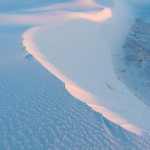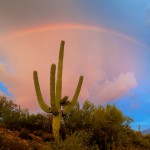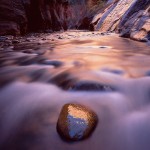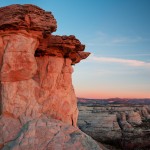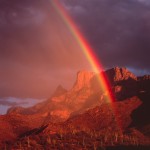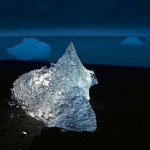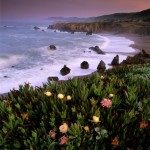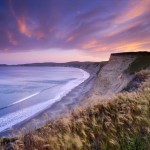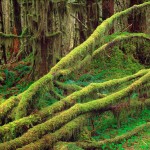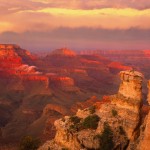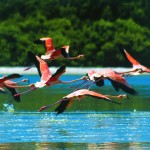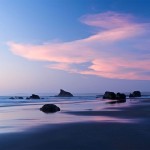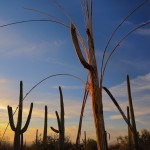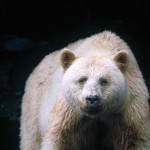Workshops by Focus: Landscape
Boulder Mountain rises to the west of Capital Reef National Park in the picturesque Aquarius Plateau of South Central Utah. It is the highest timbered plateau in North America, with over 50,000 acres of rolling forests of pine, spruce, fir, and aspen, as well as expansive meadowlands. The area features the dramatic red rock canyons and sculpted formations for which southern Utah is famous, but it is a little known and refreshing alternative to more heavily trafficked southwestern locations.
Situated immediately adjacent to the majestic Grand Staircase descending toward the Grand Canyon and the canyons of the Escalante, this place is a creative photographer’s dream come true.
The author and desert wilderness advocate Edward Abbey once astutely observed:
There are more hills, holes, humps and hollows, reefs, folds, domes, swells and grabens, buttes, benches and mesas, synclines, monoclines, and anticlines than you can ever hope to see and explore in a lifetime.
We’ll add that the quality of light and atmosphere here are superb.
Click “Read More…” below right to read on and see the image gallery…
The majestic Santa Catalina Mountains will be our backdrop in a landscape containing over 5,000 saguaro cactus – our outdoor classroom for this workshop, part of our Vision series, a special program of advanced instruction designed and presented by world-renowned photographers Jack Dykinga and John Shaw.
The creation of a truly great finished photograph is part of a process from initial concept and vision through execution in the field to digital workflow and creation of a high-quality, final master file ready for printing or publication. Vision workshops with John Shaw and Jack Dykinga address the two greatest challenges faced by photographers as they advance. The first of these is the tendency for original creative vision to reach a plateau in development, and the second is a digital workflow in need of streamlining and refinement to make the most of your images.
Click the “read more” button below right for more information and the image gallery…
Magical places with towering red sand dunes, ancient withered, desiccated forests, and storm-ravaged coastline make Namibia unique. Rare desert lions, gemsbok, elephants, and giraffes inhabit the area, with the colorful Himba people carving out a life in this arid region.
In all my travels, I have never seen such amazing and colorful dune formations. The colors ran from black to garnet to peach and red colored…sometimes bathed in coastal fog. The Namib Desert has a timeless quality that calls to me. –Jack Dykinga
Experience the haunting beauty of Namibia – Africa’s desert gem – with renowned landscape photographers Jack Dykinga and Justin Black. We will explore the striking quiver tree forests and geological formations, a ghost town abandoned to drifting sands, the rugged beauty of the coast, culminating with three days of intensive photography among the elegant forms of the thousand-foot red dunes of Sossusvlei. With warm tints of apricot, orange, red and maroon, these dunes offer abstract beauty unseen anywhere else in the world. This special place is also home to the ancient sun-blackened skeletons of camel thorn trees at the white clay “dead marsh” of Deadvlei.
A string of colonial port towns dot the coast, trapped between the South Atlantic and the dunes. Lüderitz, on the edge of the diamond-rich Sperrgebiet area, is a fascinating relic of Germany’s late 19th-century imperial aspirations. Nearby is the otherworldly and sand-bound abandoned mining town of Kolmanskop, where dunes have invaded the abandoned buildings. The photographic potential of this place is astonishing. Further north, Swakopmund and Walvis Bay bracket the southern end of the Skeleton Coast. Both possess a welcoming resort town atmosphere, with ample photographic opportunities along the coast.
Awe-inspiring and unrestrictive, this diverse geography leaves an impact you won’t soon forget.
Our itinerary has been designed to take maximum advantage of the best landscape photography opportunities that Namibia has to offer. In addition to attentive photographic instruction throughout by Dykinga and Black, our group of up to ten photographers will be led by two excellent local guides. This trip includes excellent lodging, in-Africa flights (Johannesburg–Windhoek–Johannesburg), transfers and group ground transportation from start to finish, and all meals, snacks, and beverages.
 Namibia is a very safe and welcoming country, and a tourist visa is not necessary for citizens of the USA and most developed nations.
Namibia is a very safe and welcoming country, and a tourist visa is not necessary for citizens of the USA and most developed nations.
We hope you will join us! To sign up, click the “REGISTER” link above right.
Exotic Birds – Poison Dart Frogs – Monkeys – Waterfalls – Wild Pacific Beach
All of this and more is to be found in one of the most biologically exciting places on Earth – Coast Rica’s remote Osa Peninsula – and we’d like to share the best of it with you. Envision original primary rainforest rising up a low ridge from a pristine and entirely undeveloped Pacific beach, stretching as far as the eye can see. Native toucans, scarlet macaws, and four species of New World monkeys cruise through the trees, while dramatic waterfalls roar in the jungle. Numerous species of visually striking frogs inhabit the area, including three species of colorful poison dart frogs, red-eyed tree frogs, masked tree frogs, and massive cane toads in their native habitat. Hundreds of exotic bird species abound. In addition to the toucans and macaws, long-tail hermit hummingbirds, elegant and violaceous trogons, blue-capped manakins, crested caracaras, ibis, various raptors and myriad other species are readily photographed. The forest itself is stunning, with old-growth trees full of character and beautiful graphic compositions just waiting to be discovered.
Instructors Daniel Beltrá and Justin Black will share their creative approaches to photographing rainforest fauna and flora, as well as the dramatic landscape. Hands-on in the field, we will cover long-lens and macro wildlife techniques, control of composition and light, fill-flash, control of focal plane and perspective with tilt-shift lenses, panoramic stitching, and other techniques that can be used to great effect in this amazing place.
Read Justin Black’s article “Frogs of the Osa” in Outdoor Photographer magazine
Our basecamp, El Remanso eco-lodge, is a uniquely rich and accessible environment to witness and explore the incredible flora and fauna of Central America’s rainforests. The owners are personal friends of the instructors, and the staff make guests feel like family. It’s a peaceful resort where it’s easy to let go of the hassles of travel logistics and fully immerse yourself in exploring and photographing the birds, waterfalls, monkeys and frogs, gorgeous old-growth trees, and the stunning Pacific beach.
The staff at El Remanso take great care of us – providing fresh tropical fruits, a delicious mix of international and local Tico cuisine, not to mention the superb margaritas, caipirinhas, and piña coladas – all on an inviting and spacious covered dining deck perched at the top of a canyon, at eye-level with the forest canopy. We’ll bring our long lenses to breakfast to photograph monkeys, macaws and toucans feeding in the trees. The opportunities to explore don’t end with the setting sun. A stroll with our naturalist guides around El Remanso just after dark reveals all manner of nocturnal species.
The majestic Santa Catalina Mountains will be our backdrop in a landscape containing over 5,000 saguaro cactus – our outdoor classroom for this workshop, part of our Vision series, a special program of advanced instruction designed and presented by world-renowned photographers Jack Dykinga and John Shaw.
The creation of a truly great finished photograph is part of a process from initial concept and vision through execution in the field to digital workflow and creation of a high-quality, final master file ready for printing or publication. Vision workshops with John Shaw and Jack Dykinga address the two greatest challenges faced by photographers as they advance. The first of these is the tendency for original creative vision to reach a plateau in development, and the second is a digital workflow in need of streamlining and refinement to make the most of your images. read more…
Boulder Mountain rises to the west of Capital Reef National Park in the picturesque Aquarius Plateau of South Central Utah. It is the highest timbered plateau in North America, with over 50,000 acres of rolling forests of pine, spruce, fir, and aspen, as well as expansive meadowlands. The area features the dramatic red rock canyons and sculpted formations for which southern Utah is famous, but it is a little known and refreshing alternative to more heavily trafficked southwestern locations.
Situated immediately adjacent to the majestic Grand Staircase descending toward the Grand Canyon and the canyons of the Escalante, this place is a creative photographer’s dream come true.
The author and desert wilderness advocate Edward Abbey once astutely observed:
There are more hills, holes, humps and hollows, reefs, folds, domes, swells and grabens, buttes, benches and mesas, synclines, monoclines, and anticlines than you can ever hope to see and explore in a lifetime.
We’ll add that the quality of light and atmosphere here are superb.
Click “Read More…” below right to read on and see the image gallery…
Renowned landscape photographer Marc Muench and Visionary Wild’s Justin Black have teamed up to lead a trip to the dramatic granite spires, alpine lakes, and meadows at the Cirque of the Towers in Wyoming’s Wind River Range. “The Winds” are the most alpine range in the Wyoming-Montana-Idaho complex, with soaring granite peaks reminiscent in many ways of the High Sierra Nevada but less well known and more lightly visited. The alpine wildflowers in the meadows and nearby lakes and streams offer excellent foregrounds for photographing the east-facing Cirque and other nearby peaks, which catch spectacular alpenglow at sunrise.
This is one of North America’s great mountain wildernesses, but don’t take our word for it. Following a summer 1999 horse pack trip into the Winds, internationally acclaimed mountain photographer Galen Rowell wrote the following in his April 2000 column for Outdoor Photographer magazine:
“The Wind River Range is my favorite in the Rockies. Warm, relatively dry summers create a paradise for backpackers, climbers, and photographers. Hundreds of peaks rise over 12,000 feet above glaciers and snows that last late into summer. Melt waters cascade into alpine basins filled with meadows, open pine forest, and countless lakes before joining into rivers separated by the Continental Divide.”
Our itinerary begins with a group orientation and dinner at Diamond 4 Ranch in Dickinson Park, Wyoming, on the east side of the Wind River Range (Lander is the closest large town). Our first night will be spent at an elevation of 9,200ft. in the ranch’s rustic cabins, which will serve to help acclimate us to the elevation. After an early breakfast the next morning, the experienced wranglers of Diamond 4 Ranch will lead our group on a horseback ride to camp at Lizard Head Meadows. No prior horseback experience is necessary. The horses are docile and very familiar with the trail to our camp, our base for five nights at an elevation of 10,000ft. – where a camp manager and backcountry chef will take great care of us. This is a “drop” or “spot” trip, meaning that all of our gear, coolers of fresh food, etc., will be carried in on horseback, and our camp will serve as our base for short hikes to explore the Cirque’s rich photographic opportunities.
Click “read more” below right for more information and the image gallery…
We bring the big telephotos so you don’t have to.
Etosha – Chobe – Victoria Falls, and more…
Over the last year, we have packaged a unique wildlife photography safari for a small group of five passionate photographers, visiting Etosha National Park in Namibia, Victoria Falls, and Chobe National Park in Botswana. Scheduled for June 3-20, 2013, in the early part of the winter dry season, we will enjoy comfortable temperatures and dramatic concentrations of diverse wildlife at the watering holes of Etosha. Black rhinos, giraffes, lions, elephants, and numerous antelope species are common here, and cheetahs and leopards are often seen as well.
At Chobe, animals congregate along the river in the dry season to drink and feed on the lush greenery on the banks and flood plain. In addition to Chobe’s population of over 50,000 Kalahari elephants, opportunities include hippos (with young at this time of year), Nile crocs, buffalo, waterbuck, kudu, impala, giraffes, fish eagles, lions, hyenas, African wild dog, baboons, and numerous bird species.
At both locations we have arranged use of new photo safari vehicles with innovative custom features that deliver an ideal photographic experience. The two 4WD vehicles we will use at Etosha seat three photographers each, and the custom-built photo boat at Chobe comfortably accommodates our whole group. Both on land and on the water, each photographer will have his or her own photographer’s chair with fully adjustable Wimberley-equiped telephoto lens mount. Included at no additional cost is loan of Nikon super-telephoto lenses (600mm f/4, 500mm f/4, and 200-400mm f/4 plus teleconverters) and pro camera bodies, so there is no need to carry big glass to Africa.
Click “read more” below right for the itinerary, photo gallery from Chobe and Etosha, and more information…
read more…
The superb Pacific coast landscape around Bandon, Oregon, will be our outdoor classroom for this workshop, part of our Vision series, a special program of advanced instruction designed and presented by world-renowned photographers Jack Dykinga and John Shaw.
The creation of a truly great finished photograph is part of a process from initial concept and vision through execution in the field to digital workflow and creation of a high-quality, final master file ready for printing or publication. Vision workshops with John Shaw and Jack Dykinga address the two greatest challenges faced by photographers as they advance. The first of these is the tendency for original creative vision to reach a plateau in development, and the second is a digital workflow in need of streamlining and refinement to make the most of your images. read more…
Here are some impressions that our friends from our last two trips have shared:
It’s difficult not to heap superlative praise on Jack Dykinga and Justin Black for their photographic expertise and their absolute willingness to share that expertise with the rest of us. They are truly visionaries in the landscape photography world, and their love of the Grand Canyon is infectious, and are a lot of fun to be around.
Having traveled to 5 continents, I can honestly state the Grand Canyon river trip was the best photo trip I have ever taken.
Seeing the Grand Canyon from the bottom is a visual and spiritual experience that is not to be missed by any photographer. This was my second trip down the Colorado River with Justin and I expect that it won’t be my last.
My mind is still in the Canyon. Thanks to you, Jack and Justin, for putting together this amazing experience. The Canyon is past wonder. I am sitting here working on the images and can’t seem to leave the river.
While I think I’ve finally gotten the sand out of all of my clothes, equipment and person, it will most definitely be a long time before I get the Grand Canyon sand out of my soul. I think Jack said it best when he said that the Grand Canyon was a special temple. It is awe-inspiring. I really enjoyed my time with you all, and hope to see all of you again on another Jack and Justin adventure.
About two days into the trip…I realized that I should enjoy the trip because it was just about as good as it gets. It was indeed. At this point, maybe it’s enough to say that I actually miss the sand and I hope we all will continue to keep in touch.
Designed by Jack Dykinga and Justin Black, this trip absolutely maximizes photographic potential and overall quality of experience that can be had during ten days on the Colorado River in the mile-deep Grand Canyon.
Applying our experience of numerous Grand Canyon raft trips, and in collaboration with our hand-picked boat crew from Arizona Raft Adventures/Grand Canyon Discovery, we’ve developed an itinerary that takes advantage of favorable late summer conditions and sets us up for the best landings for photo excursions and camps along the river. Detailed planning and the expert skill of experienced boat crews we’ve worked with before are critical, because there’s no going back upstream on the Colorado River.
Our itinerary starts in Flagstaff, Arizona, at the Radisson Woodlands hotel. The day before our departure for the river, we will convene to get to know each other (and catch up with returning friends), and Jack will make presentations to get your creative juices flowing and prepare you for photography in the Canyon. This will be followed by an orientation by AZRA staff to go over the game plan, safety, answer questions, and distribute dry bags for packing your personal gear. We’ll set off early the following morning for Lee’s Ferry, where our raft and crew will be waiting for us at our launch point.
A little about the raft: We will use a 32-foot-long raft built around a strong aluminum frame with a below-deck cargo hold for important items that tolerate getting wet, like camp chairs and cans of beer. Personal gear and camera bags will be stored in drybags strapped to lockers on deck above the waterline. Two expert AZRA guides will crew our raft, which is equipped with a quiet, 30HP, four-stroke Honda motor for steering purposes. The motor is shut off as we drift with the current down the river in stretches of calm water. We will be running a great deal of whitewater, and where you sit in the raft will determine whether you get soaked or stay dry (or dryish). Getting soaked by a big splash is a great way to cool off, as is floating a rapid in your life vest, which the guides offer as an option on occasion and as safety conditions permit.
Once on the Colorado River, we quickly enter Marble Canyon and from there the canyon rim towers higher and higher as we pass through ever more ancient rock strata. From the raft, we’ll take in the stunning mesas and rock formations all around us, watch bighorn sheep just a few meters away at the water’s edge, marvel at condors soaring overhead, and watch the light and shade play across the water and reflect in hues of gold and red on the canyon walls. Each afternoon, we’ll pull into riverside beaches, which will serve as our camps. These are selected in advance for group comfort and excellent photo opportunities close to camp in the evening, and to position us strategically to target the next morning’s photography location.
As we arrive in camp each afternoon, we’ll form a “bag line” as a team to unload personal gear and camp equipment from the raft to the beach. This group bonding experience is not to be underestimated. After that, we each locate our personal piece of Colorado River beach to put down our tarp, sleeping pad, pillow, sheet, and sleeping bag (all provided, as are tents, though no one seems to bother with them after a night or two). Then, while the boat crew prepares a fabulous and well-deserved dinner, we’ll photograph in the evening light. Otherwise, choices of camp activities are up to you. We’ll gather the camp chairs in a circle to chat over a beer or glass of wine, have a rinse in the river, or just relax and enjoy the peace, solitude, and crystal clear night skies.
When our time on the river comes to an end, it will be too soon. We will have been away from computers, smart phones, and traffic for ten days. AZRA will pick us up at Diamond Creek for the trip back to the Radisson in Flagstaff, stopping off on old Route 66 at Delgadillos Snow Cap in Seligman for an obligatory milkshake. After a proper shower and calls to loved ones to confirm that we’ve reemerged into civilization, we’ll meet for a final celebratory dinner with our boat crew at one of Flagstaff’s finer restaurants. After breakfast the next morning, we’ll meet to edit and project images for review and critique. Wrapping up by mid-afternoon, we’ll say “until we meet again,” and our merry band will part company with hard drives full of amazing images, heads full of incredible memories, spirits uplifted by the experience, and hearts just a little heavy that it’s all over.
We hope you’ll join us for this trip of a lifetime!
Pastel pinks and blues reflect from the sky at dawn and dusk, painting gypsum dunes that roll elegantly across the landscape. The tapestry of light and shadow, form and texture inspires the creative mind. Yuccas punctuate the landscape, rising in striking graphic isolation against the sand and sky. This is New Mexico’s White Sands National Monument, home of the world’s largest gypsum dune field, covering 275 square miles, set in a high desert basin with a dramatic mountain backdrop. This will be our outdoor classroom for this Vision series workshop, a special program of advanced instruction designed and presented by world-renowned photographers Jack Dykinga and John Shaw. Jack is recognized as one of the greatest practitioners and teachers in the history of landscape photography, and John is a natural photographic educator who is relied upon by some of the most successful photographers in the business to keep them current on digital workflow practices and Photoshop techniques. The combination is a uniquely effective and enjoyable experience.
Our fieldwork during this workshop will emphasize the search for elegant, carefully crafted compositions while anticipating the flow of light over the landscape each morning and evening. Opportunities abound, from classic near-far compositions that use yuccas to anchor foreground design, to abstracts harnessing the tones, curves and colors of the dunes, to broad panoramics and macro subjects.
The creation of a truly great finished photograph is part of a process from initial concept and vision through execution in the field to digital workflow and creation of a high-quality, final master file ready for printing or publication. Vision workshops with John Shaw and Jack Dykinga address the two greatest challenges faced by photographers as they advance. The first of these is the tendency for original creative vision to reach a plateau in development, and the second is a digital workflow in need of streamlining and refinement to make the most of your images.
On Creative Vision:
When we experience images that really move us, we are aware that they have impacted us, though we may not know what it was in the image that made it so powerful. In other words, we know when it works, but can be difficult to quantify. I try to teach the time-honored components of fine photography to build successful compositions…even in ordinary situations. People ask me, “What’s the difference between a pro and an amateur?” My response is, (a) the amateur has better equipment and (b) the professional photographer must create a publishable image every single time. To be successful, the professional must be the practitioner of a disciplined approach to situations that will result in compelling images that inform and move people. This workshop is designed to unleash that creativity in our students. – Jack Dykinga
Jack will focus on advanced seeing and ways to unlock creativity in situations that require conceptual and compositional ingenuity on the part of the photographer. In other words, he’ll answer the questions, “How do I make a great photograph when the subject matter is overwhelming and compositions don’t suggest themselves to me, and how do I avoid photographic clichés when the situation offers up a beautiful composition that is almost too obvious?”
On Workflow:
As photographers have switched to digital, one fact has become apparent: we are drowning in files. We’re shooting more images than ever, and digital file sizes are increasing with each new generation of cameras. Without a smart, logical workflow – and a familiarity with programs such as Lightroom and Photoshop – we will quickly be overwhelmed with data. – John Shaw
John will focus on teaching a logical, effective workflow that ensures the highest quality for your work, as well an image archive that is stable, consistent, and retrievable over the long term, and that ultimately liberates rather than burdens. He will cover step by step the process from shooting RAW files in the field to optimizing the final image in Photoshop.
Workflow topics to be covered include:
• File formats for shooting and for archiving
• Exposing for digital
• Downloading for automatic image organization
• Proper file naming
• Cataloging of images: Lightroom or other software
• Keywording and captioning of images
• The many uses of metadata
• Processing the raw file
• Using the tools in Adobe Camera Raw and Lightroom’s Develop Module
• Color spaces for the best results in different media
• The many faces of Bridge
• Creating panoramic images
• Color adjustment strategies
• Using Photoshop to finalize the image: dodging and burning, adjustment layers and layer masking, controlling luminosity and contrast, sharpening for output
• Creating a PDF electronic book
• Color-managed workflow from input to output
The workshop includes eight field sessions at various locations around White Sands that we have scouted in advance. Also featured are several projected classroom lectures, and ample hands-on instruction, critiques, single-occupancy lodging (prorated fee available for double-occupancy or for those who do not require lodging), and all meals and drinks. Justin Black of Visionary Wild will be present to serve as assistant instructor and to ensure everything runs smoothly. As always, all three instructors will be present to teach and assist students throughout the workshop.
We will meet at Fairfield Inn in Alamogordo, New Mexico at 1pm on the first day. Photography sessions at White Sands begin that afternoon. Each morning and evening, we’ll be out to photograph first light before breakfast and the evening light before dinner. During mid-day hours, Jack and John will make presentations on advanced seeing, composition and creativity, digital workflow, and maximizing image potential. Critique sessions will follow each day before returning to the field for photography around 3:30pm. Friday morning will be the final field session, followed by critiquing until the final lunch and break up at 2:00 pm. The class size is limited to ten to ensure that everyone gets ample time and attention from the three instructors, both in the field and the classroom.
Any enthusiastic photographer will feel right at home in this workshop. We supply materials in advance of the session to get newcomers up to speed with basics having to do with digital camera set-up and techniques, essential equipment recommendations, and other guidelines to ensure that everyone is ready to make the most of the experience.
Please contact us with any questions you may have about this session. We recommend registering promptly to reserve your space as our Vision workshops fill especially quickly. A deposit of 50% is required at time of booking to reserve space, with balance payable 60 days prior to workshop start date.
The majestic Santa Catalina Mountains will be our backdrop in a landscape containing over 5,000 saguaro cactus – our outdoor classroom for this workshop, part of our Vision series, a special program of advanced instruction designed and presented by world-renowned photographers Jack Dykinga and John Shaw.
The creation of a truly great finished photograph is part of a process from initial concept and vision through execution in the field to digital workflow and creation of a high-quality, final master file ready for printing or publication. Vision workshops with John Shaw and Jack Dykinga address the two greatest challenges faced by photographers as they advance. The first of these is the tendency for original creative vision to reach a plateau in development, and the second is a digital workflow in need of streamlining and refinement to make the most of your images. read more…
Zion National Park’s red rock and limestone cliffs and spires tower above sculpted canyons, grottoes, and waterways, forming a unique and awe-inspiring landscape at the convergence of the Colorado Plateau, the Great Basin, and the Mojave Desert. Autumn’s arrival brings comfortably cool temperatures and fall colors in the maples and cottonwoods. Zion is quite simply one of the gems of the National Park system, a highlight of the American Southwest, and one of our favorite outdoor photographic “classrooms.”
For three decades, Jack Dykinga has captured the astonishing beauty of light, form, texture, and natural history that make the southwestern American deserts and canyons unique. He knows this landscape and its amazing light better than anyone and enjoys nothing more than sharing his insights and vision with other passionate photographers. Assistant instructor Justin Black has co-led three prior workshops with Jack at Zion and is always struck by the way Zion reveals its secrets like the layers of an onion being peeled back – every visit yields a new discovery and new qualities of light. This all-inclusive workshop will be based at Flanigan’s Inn of Springdale, Utah, just outside the western entrance of Zion National Park, providing excellent access to field locations. Along with eight field sessions, Jack and Justin will present projected lectures on composition, light, exposure control, anticipating and working through changing conditions, and essentials of digital workflow. Three critique sessions will provide essential constructive feedback on images created during the workshop.
This Creative Core workshop deals heavily with developing creativity and visualizing compositions, with a great deal of photography in the field. Creative Core workshops are general outdoor photography workshops designed to expose participants to the full creative toolbox, but the emphasis of individual participants’ work is up to them. Whether they wish to focus on classic landscape, abstraction, color, black and white, HDR, panoramics, multiple exposures, or all of the above, any enthusiastic photographer will feel right at home in this workshop. Jack and Justin have decades of experience successfully accommodating a range of experience levels within the context of a workshop.
In advance of the session, we supply materials to get everyone up to speed with fundamentals of digital camera set-up and technique, as well as essential equipment recommendations, recommended packing list, and other guidelines to ensure that everyone is ready to make the most of the experience.
Note: This workshop is operated under National Park Service Commercial Use Authorization.
Exotic Birds – Poison Dart Frogs – Monkeys – Waterfalls – Wild Pacific Beach
All of this and more is to be found in one of the most biologically exciting places on Earth – Coast Rica’s remote Osa Peninsula – and we’d like to share the best of it with you. Envision original primary rainforest rising up a low ridge from a pristine and entirely undeveloped Pacific beach, stretching as far as the eye can see. Native toucans, scarlet macaws, and four species of New World monkeys cruise through the trees, while dramatic waterfalls roar in the jungle. Numerous species of visually striking frogs inhabit the area, including three species of colorful poison dart frogs, red-eyed tree frogs, masked tree frogs, and massive cane toads in their native habitat. Hundreds of exotic bird species abound. In addition to the toucans and macaws, long-tail hermit hummingbirds, trogons, blue-capped manakins, crested caracaras, ibis, various raptors and myriad other species are readily photographed. The forest itself is stunning, with old-growth trees full of character and beautiful graphic compositions just waiting to be discovered.
Instructors Daniel Beltrá and Justin Black will share their creative approaches to photographing rainforest fauna and flora, as well as the dramatic landscape. Hands-on in the field, we will cover long-lens and macro wildlife techniques, control of composition and light, fill-flash, control of focal plane and perspective with tilt-shift lenses, panoramic stitching, and other techniques that can be used to great effect in this amazing place.
CLICK HERE to read Justin Black’s article “Frogs of the Osa” in Outdoor Photographer magazine
Click “read more…” below right for more information and the photo gallery…
Boulder Mountain rises to the west of Capital Reef National Park in the picturesque Aquarius Plateau of South Central Utah. It is the highest timbered plateau in North America, with over 50,000 acres of rolling forests of pine, spruce, fir, and aspen, as well as expansive meadowlands. The area features the dramatic red rock canyons and sculpted formations for which southern Utah is famous, but it is a little known and refreshing alternative to more heavily trafficked southwestern locations.
Situated immediately adjacent to the majestic Grand Staircase descending toward the Grand Canyon and the canyons of the Escalante, this place is a creative photographer’s dream come true.
The author and desert wilderness advocate Edward Abbey once astutely observed:
There are more hills, holes, humps and hollows, reefs, folds, domes, swells and grabens, buttes, benches and mesas, synclines, monoclines, and anticlines than you can ever hope to see and explore in a lifetime.
We’ll add that the quality of light and atmosphere here are superb.
Jack Dykinga has become one of the greatest practitioners and teachers of nature photography, specializing in Southwestern landscape. This workshop combines eight field sessions to an array of locations that Jack knows like the back of his hand. Three critique sessions of participant photographs made during the session will build on Jack’s highly effective projected lectures on composition, qualities of light, and working the scene to distill the essence of the image. Assistant instructor Justin Black will provide support thoughout the workshop and keep the itinerary on track. The class size is limited to fifteen to ensure that everyone gets the time and attention they need, both in the field and the classroom.
Basecamp: Our group will be virtually taking over the Boulder Mountain Lodge, an intimate arrangement of buildings and outdoor common areas located on a 15-acre bird sanctuary at an elevation of 6650ft. In addition to beautiful rooms, the welcoming and comfortable lodge offers an array of amenities. Our meals will be provided by Hell’s Backbone Grill, a highly rated gourmet restaurant featuring southwestern flavors. Our group meals provide an informal setting to socialize and address specific interests that may not be covered during lectures and classroom discussion.
Jack and Justin will share specialized techniques and insights drawn from decades of experience in landscape photography to help you make this sublime landscape sing in your work. This Creative Core workshop deals heavily with composition, working a scene through changing light, exposure control, developing creativity, essential gear and creative tools, fundamentals of digital workflow, an introduction to digital exposure blending and stitching, and a great deal of photography in the field followed by highly constructive group critiques. Creative Core workshops are general outdoor photography workshops and the emphasis of any individual participant’s work is up to them, whether they wish to focus on classic landscape, abstraction, color, black and white, HDR, panoramics, multiple exposures, or all of the above. Any enthusiastic photographer will feel right at home in this workshop.
We supply materials in advance of the session to get newcomers up to speed with basics having to do with digital camera set-up and techniques, essential equipment recommendations, and other guidelines to ensure that everyone is ready to make the most of the experience.
Lodging, all meals, and beverages are included in the package. Breakfast and dinner is served at the renowned Hell’s Backbone Grill each day, and the grill provides box lunches as well.
Please contact us promptly to reserve your space. A deposit of 50% is required at time of booking to reserve space, with balance payable 60 days prior to workshop start date.
This second session has been added due to popular demand for the Vision Workshops series.
The majestic Santa Catalina Mountains will be our backdrop in a landscape containing over 5,000 saguaro cactus – our outdoor classroom for this workshop, part of our Vision series, a special program of advanced instruction designed and presented by world-renowned photographers Jack Dykinga and John Shaw.
The creation of a truly great finished photograph is part of a process from initial concept and vision through execution in the field to digital workflow and creation of a high-quality, final master file ready for printing or publication. Vision workshops with John Shaw and Jack Dykinga address the two greatest challenges faced by photographers as they advance. The first of these is the tendency for original creative vision to reach a plateau in development, and the second is a digital workflow in need of streamlining and refinement to make the most of your images.
On Creative Vision:
When we experience images that really move us, we are aware that they have impacted us, though we may not know what it was in the image that made it so powerful. In other words, we know when it works, but can be difficult to quantify. I try to teach the time-honored components of fine photography to build successful compositions…even in ordinary situations. People ask me, “What’s the difference between a pro and an amateur?” My response is, (a) the amateur has better equipment and (b) the professional photographer must create a publishable image every single time. To be successful, the professional must be the practitioner of a disciplined approach to situations that will result in compelling images that inform and move people. This workshop is designed to unleash that creativity in my students. – Jack Dykinga
Jack will focus on advanced seeing and ways to unlock creativity in situations that require conceptual and compositional ingenuity on the part of the photographer. In other words, he’ll answer the questions, “How do I make a great photograph when the subject matter and composition don’t suggest themselves to me, and how do I avoid photographic clichés when the situation offers up a beautiful composition that is almost too obvious?”
On Workflow:
As photographers have switched to digital, one fact has become apparent: we are drowning in files. We’re shooting more images than ever, and digital file sizes are increasing with each new generation of cameras. Without a smart, logical workflow – and a familiarity with programs such as Lightroom and Photoshop – we will quickly be overwhelmed with data. – John Shaw
John will focus on teaching a logical, effective workflow that ensures the highest quality for your work, as well an image archive that is stable, consistent, and retrievable over the long term, and that ultimately liberates rather than burdens. He will cover step by step the process from shooting RAW files in the field to optimizing the final image in Photoshop.
Workflow topics to be covered include:
• File formats for shooting and for archiving
• Exposing for digital
• Downloading for automatic image organization
• Proper file naming
• Cataloging of images: Lightroom or other software
• Keywording and captioning of images
• The many uses of metadata
• Processing the raw file
• Using the tools in Adobe Camera Raw and Lightroom’s Develop Module
• Color spaces for the best results in different media
• The many faces of Bridge
• Creating panoramic images
• Color adjustment strategies
• Using Photoshop to finalize the image: dodging and burning, adjustment layers and layer masking, controlling luminosity and contrast, sharpening for output
• Creating a PDF electronic book
• Color-managed workflow from input to output
The workshop includes field sessions, classroom lectures and ample hands-on instruction, critiques, single-occupancy lodging (prorated fee available for double-occupancy or for those who do not require lodging), and all meals and drinks. Justin Black of Visionary Wild will be present to serve as assistant instructor and to ensure everything runs smoothly. As always, all three instructors will be present to teach and assist students throughout the workshop.
Field sessions begin the evening of the first day. Each morning and evening, we’ll be out to photograph first light before breakfast, and out for evening light after dinner. During mid-day hours, Jack and John will make presentations on advanced seeing, composition and creativity, digital workflow, and maximizing image potential. Critique sessions will follow each day before returning to the field for photography in afternoon and evening light. Saturday morning will be the final field session, followed by critiquing until the final lunch and break up at 2:00 pm.
Join Daniel Beltrá nd Justin Black for this unique photographic experience in the land of fire and ice.
Storybook waterfalls gushing over volcanic formations… Icebergs on black sand beaches… Orange-billed Atlantic puffins perched on sea cliffs… Deep sapphire hues in ancient glacial ice… steaming geothermal rivers flowing through a multi-colored volcanic landscape…
This is Iceland, land of fire and ice. Astride the Mid Atlantic Ridge, this geologically active island is being ripped in two by the opposing movement of the North American and Eurasian Plates, while magma surges through the Earth’s fractured crust to fill the void of displaced land. The ice cap and glaciers feed pristine rivers, and over 100 volcanoes and countless geothermal springs dot the landscape.
Renowned photographers Daniel Beltrá and Justin Black will lead this twelve-night photo workshop for ten participants, emphasizing photography in the field at amazing locations selected on our prior Icelandic travels. Our small group will travel in comfort in a specially customized bus with room for everyone to have a window seat, complete with Wi-Fi and numerous power outlets to enable us to edit our images while we’re on the road.
Click the “read more” tab below to continue… read more…
Characterized by the ebb and flow of tides and fog, California’s sleepy Sonoma Coast features light, atmospherics, and landscape as fine as the region’s famous pinot noir. Dramatic headlands, sea stacks, and beaches are sculpted by the Pacific waves and the action of tectonic plates along the San Andreas Fault. The rugged beauty here offers unending opportunities for passionate photographers. This advanced workshop is geared for photographers who are fairly comfortable with the fundamentals of photography and digital workflow, and who seek higher-level mentorship.
Instructors Jerry Dodrill and Justin Black will lead eight field sessions to explore remote coves, sea arches and tidepools, coastal ridges and steep canyons filled with redwood forest. They will share insights that will help you to refine your creative vision, composition skills, and field techniques, understand the practical implications of human visual cognition, explore ways to use the element of time to expand your creative horizons, and help find ways to add greater purpose and meaning to your photography.
Our basecamp at historic Timber Cove Inn, located on a headland with dramatic views of sea stacks and surf, serves as an excellent position from which we will set off for a range of photographic objectives from Bodega Bay’s bluffs and sand dunes to the Russian River, Fort Ross, and the sculpted tufoni sandstone formations and wind-sculpted bishop pines at Salt Point. We will visit mysterious Bowling Ball Beach and the historic Point Arena lighthouse. A special feature of this workshop will be field session in a scenic ridge-top vineyard and a private wine tasting with the wine maker.
Photographer Jerry Dodrill has spent the last dozen years living and photographing along the Sonoma coast, chasing light and storms, and seeking out the exceptional opportunities offered by this little-photographed landscape. The Sonoma Coast is a photographer’s dream come true in contrast to the restricted access and crowds of more heavily trafficked destinations further south. The subject matter and freedom to explore the coastline is exceptional, and photographers are able to pursue their creativity without distraction.
Point Reyes National Seashore and the Marin Coast are truly a photographer’s playground, rich with diverse subject matter – landscape, seascape, flora and fauna – with ever-changing light and the beautiful interplay of sun and marine fog. It’s the perfect setting for a workshop focused on developing creativity and honing skills. The talented team of Jerry Dodrill and Justin Black will teach you to take control of the finer points of composition, exposure and tonal control, and specialized techniques for approaching this sublime coastal landscape.
Scheduled during the spring wildflowers season and during mid-week to avoid weekend crowds, we will spend our morning and evening field time at locations along the Marin County coast as far north as Tomales Point and as far south as Marin Headlands. Old-growth redwood forest, the blooming flanks of Mt. Tamalpais overlooking the Pacific, seastacks and cliffs, wild beaches, headlands, tule elk, seals, sea birds, and more make this place very special indeed.
My good friend and colleague, Jerry Dodrill, and I started our photographic exploration of this astonishing landscape when we worked with the late Galen Rowell, leading workshop groups to the Marin coast from Galen’s gallery in Emeryville. Jerry has chosen to spend the last eleven years here, chasing storms and photographing along edges of land and sea, earth and sky, fog and light. As Galen pointed out in his book Bay Area Wild, this piece of coastline is a spectacular natural treasure, despite being within easy day-trip range of a major metropolitan area. Those who live nearby just might begin to take its wonders for granted, but it is amazing what you can find here when you approach it with eyes wide open. –Justin Black
This four-day, four night Creative Core workshop deals heavily with composition, working with changing light, exposure control, essential gear and creative tools, fundamentals of digital workflow, and introduction to digital exposure blending and stitching, and an intense schedule of photography in the field followed by constructive group critiques. Creative Core workshops are generalist outdoor photography workshops and the emphasis of any individual participant’s work is up to them, whether they wish to focus on landscape, macro, wildlife (as the opportunity presents itself), abstraction, color, black and white, HDR, panoramics, multiple exposures, or all of the above. Any enthusiastic photographer will feel right at home in this workshop. In our experience, most participants will be solid intermediates with a couple relative beginners and a handful of advanced photographers. Jerry and Justin each have over a decade of experience successfully accommodating a range of experience levels at workshops.
Very often, we are amazed by the way in which the beginners teach the advanced students a thing or two about unrestrained creative openness and serendipity, while the expertise of the advanced students can be a welcome resource for the rest of the class. We supply materials in advance of the session to get newcomers up to speed with basics having to do with digital camera set-up and techniques, essential equipment recommendations, and other guidelines to ensure that everyone is ready to make the most of the experience.
Lodging, all meals, and beverages are included in the package.
The Olympic Peninsula offers an astonishing array of landscapes and micro-climates in a relatively compact area. From its dramatic rocky coast and tidal pools, to old-growth temperate rainforest, to alpine meadows, glaciated peaks, and vast wilderness, it seems to have it all. Marine fog pours through mountain passes, filling inland valleys while ridge-top meadows in full bloom bask in the sun. Roosevelt elk bugle in the lush forest, home to some of the world’s largest trees. The snowcapped splendor of the Olympic Mountains provides a constant backdrop. No one knows this majestic place better than the award-winning photographic team of Terry Donnelly and Mary Liz Austin.
Click the “read more…” tab below right to continue and see the photo gallery.
What happens when a group of enthusiastic photographers join together for a 10-day raft trip through 226-miles of mind-bending Grand Canyon scenery and 1.75 billion years of geological history?
Here are some impressions that our friends from past trips have shared with one another:
The sand may be gone, but my mind is still in the Canyon. Thanks to you, Jack and Justin, for putting together this amazing experience. The Canyon is past wonder. I am sitting here working on the images and can’t seem to leave the river.
While I think I’ve finally gotten the sand out of all of my clothes, equipment and person, it will most definitely be a long time before I get the Grand Canyon sand out of my soul. I think Jack said it best when he said that the Grand Canyon was a special temple. It is awe-inspiring. I really enjoyed my time with you all, and hope to see all of you again on another Jack and Justin adventure.
About two days into the trip…I realized that I should enjoy the trip because it was just about as good as it gets. It was indeed. At this point, maybe it’s enough to say that I actually miss the sand and I hope we all will continue to keep in touch.
Designed by Jack Dykinga and Justin Black, this trip absolutely maximizes photographic potential and overall quality of experience that can be had during ten days on the Colorado River in the mile-deep Grand Canyon.
* Note: Please click the “read more” tab below right for all the details, the image gallery, and National Park Service concessionaire compliance information.
Applying our experience of numerous Grand Canyon raft trips, and in collaboration with our hand-picked crews from Arizona Raft Adventures (AZRA), we’ve developed an itinerary that takes advantage of favorable spring conditions and sets us up for the best landings for photo excursions and camps along the river. This detailed planning and the expert skill of experienced boat crews we’ve worked with before are critical, because there’s no going back upstream on the Colorado River.
This trip is scheduled for May, when water and wildflowers are in greater abundance, and daytime temperatures are a bit cooler than the rest of the river guiding season. Our itinerary starts in Flagstaff, Arizona, at the Radisson Woodlands hotel. The afternoon before our departure for the river, we will convene to get to know each other (and catch up with returning friends), and Jack will make an introductory presentation to get your creative juices flowing. This will be followed by an orientation by AZRA staff to go over the game plan, safety, answer questions, and distribute dry bags for packing your personal gear. We’ll set off early the following morning for Lee’s Ferry, where our raft and crew will be waiting for us at our launch point.
A little about the raft: We will use a 32-foot-long raft built around a strong aluminum frame with a below-deck cargo hold for important items that tolerate getting wet, like camp chairs and cans of beer. Personal gear and camera bags will be stored in drybags strapped to lockers on deck above the waterline. Two expert AZRA guides will crew our raft, which is equipped with a small, quiet four-stroke Honda motor for steering purposes. The motor is shut off as we drift with the current down the river in stretches of calm water. We will be running a great deal of whitewater, and where you sit in the raft will determine whether you get soaked or stay dry (or dryish). Getting soaked by a big splash is a great way to cool off, as is floating a rapid in your life vest, which the guides offer as an option on occasion and as safety conditions permit.
Once on the Colorado River, we quickly enter Marble Canyon and from there the canyon rim towers higher and higher as we pass through ever more ancient rock strata. From the raft, we’ll take in the stunning mesas and rock formations all around us, watch bighorn sheep just a few meters away at the water’s edge, marvel at condors soaring overhead, and watch the light and shade play across the water and reflect in hues of gold and red on the canyon walls. Each afternoon, we’ll pull into riverside beaches, which will serve as our camps. These are selected in advance for group comfort and excellent photo opportunities close to camp in the evening, and to position us strategically to target the next morning’s photography location.
As we arrive in camp each afternoon, we’ll form a “bag line” as a team to unload personal gear and camp equipment from the raft to the beach. This group bonding experience is not to be underestimated. After that, we each locate our personal piece of Colorado River beach to put down our tarp, sleeping pad, pillow, sheet, and sleeping bag (all provided, as are tents, though no one seems to bother with them after a night or two). Then, while the boat crew prepares a fabulous and well-deserved dinner, Jack and Justin will lead photo sessions in the evening light. Otherwise, choices of camp activities are up to you. We’ll gather the camp chairs in a circle to chat over a beer or glass of wine, have a rinse in the river as conditions permit, or just relax and enjoy the peace, solitude, and crystal clear night skies.
When our time on the river comes to an end, it will be too soon. We will have been away from computers, cell phones, and traffic for ten days. AZRA will pick us up at Diamond Creek for the trip back to the Radisson in Flagstaff, stopping off on old Route 66 at Delgadillos Snow Cap in Seligman for an obligatory milkshake (or two). After a proper shower and calls to loved ones to confirm that we’ve reemerged into civilization, we’ll meet for a final group dinner with our boat crew. After breakfast the next morning, we’ll meet to edit and project images for review and critique. Wrapping up by mid-afternoon, we’ll say “until we meet again,” and our merry band will part company with hard drives full of amazing images, heads full of incredible memories, spirits uplifted by the experience, and hearts just a little heavy that it’s all over.
We hope you’ll join us for this trip of a lifetime, especially if it’s for the second time!
* NOTE: The raft-trip component of this package is operated through Arizona Raft Adventures, a National Park concessionaire. National Park Service rules require that we disclose and distinguish our cost for the AZRA ten-day raft trip itself, which is $2840 per participant. The fee for the photographic workshop, the days prior to and following the AZRA raft trip, is $3,155. This includes instruction, critique, meals (beginning with dinner the night before the raft trip and ending with lunch the day after the raft trip), lodging in Flagstaff the night before and the night after the trip, as well as all taxes and gratuities. The total combined cost for the raft trip and workshop is $5,995 per person.
In the final year of the 5,126-year Mayan calendar cycle, we bring you a very special expedition for six photographers into this land of hidden cenotes, stunning pre-Columbian cities, elegant haciendas, and abundant tropical life.
The Mexican state of Yucatán, on the west side of the peninsula, is a world apart from the more familiar tourist Mecca of Cancún. It is a wonderful, safe, and intriguing place, rich with human and geological history and overflowing with haunting beauty. Subtropical forest conceals beneath its roots a geological sponge of porous limestone. The Chicxulub impact crater, created by the asteroid that ended the age of the dinosaurs 65 million years ago, filled with water that dissolved pockets and channels in the subterranean limestone around its periphery, creating myriad caves and underground rivers.
Whenever these caves and sinkholes open to the outside world, they are known as cenotes (seh-NÓH-tehs). The inspiration for countless Mayan legends, these crystal clear underground pools and grottoes will be a primary focus of this expedition, which will also feature pre-Columbian Mayan sites, elegant and updated 19th-century haciendas full of historic character, and the largest pink flamingo colony in the world at Celestún Biosphere Reserve.
Of the thousands of cenotes distributed across the Yucatán, some have wide-mouthed cave entrances, inviting the visitor to walk in to discover the fantastic subterranean grottoes they conceal. In the darkest cenotes, we’ll creatively illuminate the walls, stalagmites and stalactites, and other formations both above and below water, using lamps and strobes that we bring along. Others admit brilliant shafts of natural light that spotlight the blue water and reflect to illuminate the interior. Some cenotes are open-air sinkholes holding inviting pools of cool, clear water. Most are undeveloped and virtually impossible to find without the benefit of a knowledgeable local guide.
We have arranged for our friend Alfredo Medina to lead the way. Since 1992, Alfredo has lived in Quintana Roo on the peninsula’s east coast, where he owns a high-end printing business. He carried out extensive photographic coverage of Yucatecan cenotes for his beautiful book Cenotes: Imprints of Water and Light in the Jungle, published in 2008. Alfredo is also co-photographer for the book Birds of the Yucatán Peninsula (1997). Alfredo and his wife, Sara, serve as trustees for the non-profit conservation organization Amigos de Sian Ka’an, promoting conservation action on the Yucatan peninsula.
Jack Dykinga and Justin Black collaborated with Alfredo in October 2009, during a Rapid Assessment Visual Expedition (RAVE) in the Yucatan operated by the International League of Conservation Photographers, while Justin was the ILCP’s Executive Director. Guidance by Alfredo and his wife Sara was critical to our RAVE assignment, accessing beautiful cenotes off the tourist routes, known only to the friendly and gracious Mayan locals. Alfredo is a true gentleman explorer, a gifted photographer, and an absolute pleasure to work with.
In addition to several cenote excursions, our group will visit the pre-Columbian Mayan City of Uxmal, spectacularly situated in the Puuc hills south of Merida. Considered by many to be the most architecturally beautiful Mayan city, Uxmal was built between 600 and 900 A.D. Due to excellent construction, it is one of the few Mayan cities to remain sufficiently well-preserved to provide the modern visitor with a good sense of what the central ceremonial district would have been like at its peak. The pyramids, temples, hieroglyphs, mosaics, and sculptures here are sublime and full of mystery.
Another Mayan pyramid rises immediately behind the main house at Hacienda Itzincab-Cámara, our lodging for the first four nights of the expedition. “Itzincab,” as it is known locally, is a photographer’s dream in itself, with recently restored 19th-century architecture, lush tropical gardens, and excellent bird habitat. We were welcomed as guests at Itzincab during the ILCP RAVE and were singularly impressed by the hospitality of the staff, the comfort and elegance of the accommodations, and its exceptional suitability to serve as a workshop base. Read more about this special place below under “Accommodations.”
For our final two nights, we will relocate to Eco Paraiso near the estuary of Celestún Biosphere Reserve, where 30,000 pink flamingos gather in January each year to form the largest colony of the species to be found anywhere on Earth. Celestún is also host to over 300 other species of birds and many species of reptiles, including Morelet’s and American crocodiles, four sea turtle species, iguanas, land turtles, and boa constrictors.
The superb Pacific coast landscape around Bandon, Oregon, will be our outdoor classroom for this workshop, part of our Vision series, a special program of advanced instruction designed and presented by world-renowned photographers Jack Dykinga and John Shaw.
The creation of a truly great finished photograph is part of a process from initial concept and vision through execution in the field to digital workflow and creation of a high-quality, final master file ready for printing or publication. Vision workshops with John Shaw and Jack Dykinga address the two greatest challenges faced by photographers as they advance. The first of these is the tendency for original creative vision to reach a plateau in development, and the second is a digital workflow in need of streamlining and refinement to make the most of your images.
On Creative Vision:
When we experience images that really move us, we are aware that they have impacted us, though we may not know what it was in the image that made it so powerful. In other words, we know when it works, but can be difficult to quantify. I try to teach the time-honored components of fine photography to build successful compositions…even in ordinary situations. People ask me, “What’s the difference between a pro and an amateur?” My response is, (a) the amateur has better equipment and (b) the professional photographer must create a publishable image every single time. To be successful, the professional must be the practitioner of a disciplined approach to situations that will result in compelling images that inform and move people. This workshop is designed to unleash that creativity in my students. – Jack Dykinga
Jack will focus on advanced seeing and ways to unlock creativity in situations that require conceptual and compositional ingenuity on the part of the photographer. In other words, he’ll answer the questions, “How do I make a great photograph when the subject matter and composition don’t suggest themselves to me, and how do I avoid photographic clichés when the situation offers up a beautiful composition that is almost too obvious?”
On Workflow:
As photographers have switched to digital, one fact has become apparent: we are drowning in files. We’re shooting more images than ever, and digital file sizes are increasing with each new generation of cameras. Without a smart, logical workflow – and a familiarity with programs such as Lightroom and Photoshop – we will quickly be overwhelmed with data. – John Shaw
John will focus on teaching a logical, effective workflow that ensures the highest quality for your work, as well an image archive that is stable, consistent, and retrievable over the long term, and that ultimately liberates rather than burdens. He will cover step by step the process from shooting RAW files in the field to optimizing the final image in Photoshop.
Workflow topics to be covered include:
• File formats for shooting and for archiving
• Exposing for digital
• Downloading for automatic image organization
• Proper file naming
• Cataloging of images: Lightroom or other software
• Keywording and captioning of images
• The many uses of metadata
• Processing the raw file
• Using the tools in Adobe Camera Raw and Lightroom’s Develop Module
• Color spaces for the best results in different media
• The many faces of Bridge
• Creating panoramic images
• Color adjustment strategies
• Using Photoshop to finalize the image: dodging and burning, adjustment layers and layer masking, controlling luminosity and contrast, sharpening for output
• Creating a PDF electronic book
• Color-managed workflow from input to output
The workshop includes field sessions, classroom lectures and ample hands-on instruction, critiques, single-occupancy lodging (prorated fee available for double-occupancy or for those who do not require lodging), and all meals and drinks. Justin Black of Visionary Wild will be present to serve as assistant instructor and to ensure everything runs smoothly. As always, all three instructors will be present to teach and assist students throughout the workshop.
Field sessions begin the evening of the first day. Each morning and evening, we’ll be out to photograph first light before breakfast, and out for evening light after dinner. During mid-day hours, Jack and John will make presentations on advanced seeing, composition and creativity, digital workflow, and maximizing image potential. Critique sessions will follow each day before returning to the field for photography in afternoon and evening light. Friday morning will be the final field session, followed by critiquing until the final lunch and break up at 2:00 pm.
The majestic Santa Catalina Mountains will be our backdrop in a landscape containing over 5,000 saguaro cactus – our outdoor classroom for this workshop, part of our Vision series, a special program of advanced instruction designed and presented by world-renowned photographers Jack Dykinga and John Shaw.
The creation of a truly great finished photograph is part of a process from initial concept and vision through execution in the field to digital workflow and creation of a high-quality, final master file ready for printing or publication. Vision workshops with John Shaw and Jack Dykinga address the two greatest challenges faced by photographers as they advance. The first of these is the tendency for original creative vision to reach a plateau in development, and the second is a digital workflow in need of streamlining and refinement to make the most of your images.
On Creative Vision:
When we experience images that really move us, we are aware that they have impacted us, though we may not know what it was in the image that made it so powerful. In other words, we know when it works, but can be difficult to quantify. I try to teach the time-honored components of fine photography to build successful compositions…even in ordinary situations. People ask me, “What’s the difference between a pro and an amateur?” My response is, (a) the amateur has better equipment and (b) the professional photographer must create a publishable image every single time. To be successful, the professional must be the practitioner of a disciplined approach to situations that will result in compelling images that inform and move people. This workshop is designed to unleash that creativity in my students. – Jack Dykinga
Jack will focus on advanced seeing and ways to unlock creativity in situations that require conceptual and compositional ingenuity on the part of the photographer. In other words, he’ll answer the questions, “How do I make a great photograph when the subject matter and composition don’t suggest themselves to me, and how do I avoid photographic clichés when the situation offers up a beautiful composition that is almost too obvious?”
On Workflow:
As photographers have switched to digital, one fact has become apparent: we are drowning in files. We’re shooting more images than ever, and digital file sizes are increasing with each new generation of cameras. Without a smart, logical workflow – and a familiarity with programs such as Lightroom and Photoshop – we will quickly be overwhelmed with data. – John Shaw
John will focus on teaching a logical, effective workflow that ensures the highest quality for your work, as well an image archive that is stable, consistent, and retrievable over the long term, and that ultimately liberates rather than burdens. He will cover step by step the process from shooting RAW files in the field to optimizing the final image in Photoshop.
Workflow topics to be covered include:
• File formats for shooting and for archiving
• Exposing for digital
• Downloading for automatic image organization
• Proper file naming
• Cataloging of images: Lightroom or other software
• Keywording and captioning of images
• The many uses of metadata
• Processing the raw file
• Using the tools in Adobe Camera Raw and Lightroom’s Develop Module
• Color spaces for the best results in different media
• The many faces of Bridge
• Creating panoramic images
• Color adjustment strategies
• Using Photoshop to finalize the image: dodging and burning, adjustment layers and layer masking, controlling luminosity and contrast, sharpening for output
• Creating a PDF electronic book
• Color-managed workflow from input to output
The workshop includes field sessions, classroom lectures and ample hands-on instruction, critiques, single-occupancy lodging (prorated fee available for double-occupancy or for those who do not require lodging), and all meals and drinks. Justin Black of Visionary Wild will be present to serve as assistant instructor and to ensure everything runs smoothly. As always, all three instructors will be present to teach and assist students throughout the workshop.
Field sessions begin the evening of the first day. Each morning and evening, we’ll be out to photograph first light before breakfast, and out for evening light after dinner. During mid-day hours, Jack and John will make presentations on advanced seeing, composition and creativity, digital workflow, and maximizing image potential. Critique sessions will follow each day before returning to the field for photography in afternoon and evening light. Saturday morning will be the final field session, followed by critiquing until the final lunch and break up at 2:00 pm.
Visionary Wild is kicking off our program of world-class photography workshops and expeditions with a unique opportunity in British Columbia’s remote and pristine Great Bear Rainforest, based out of the world-class King Pacific Lodge, September 5-12, 2011. This expedition is led by photographers Jack Dykinga and Daniel Beltrá, both of whom became intimately familiar with this threatened coastal ecosystem in September 2010, during a Rapid Assessment Visual Expedition (RAVE) organized by the International League of Conservation Photographers (ILCP). Justin Black of Visionary Wild will manage workshop operations and serve as assistant instructor.
There are few places on Earth where pristine temperate rain forest merges with a healthy and thriving marine ecosystem. Jack Dykinga characterizes the place beautifully:
